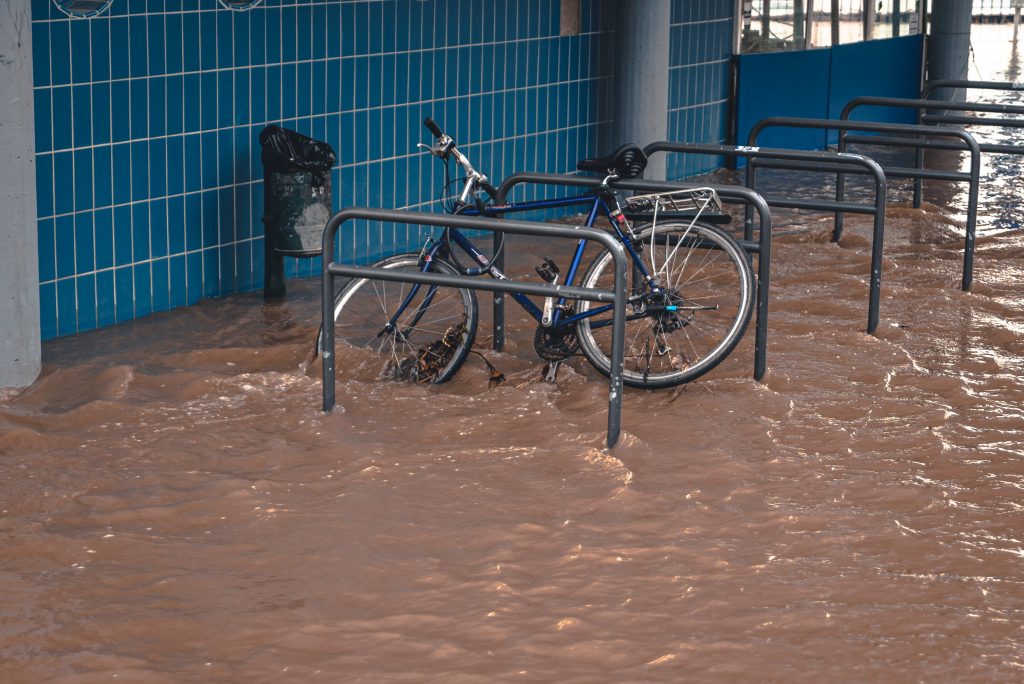
Global warming and climate change are the most extensively discussed topical issues affecting the environment. A flood is a natural hazard that can be considered a humanitarian emergency. Death, disease, injury, displacement of people, and economic loss are the usual consequences of the flood.
Monsoon Flood consists of two words; monsoon and flood. Monsoon rains have brought massive flooding in several countries across Asia. The word monsoon (/mɒnˈsuːn/) describes seasonal changes in atmospheric circulation and precipitation associated with the asymmetric heating of land and sea.
According to the World Meteorological Organization, many parts of central, north, and northeast India had received 15 centimeters (6 inches) more rainfall than usual by the middle of July. For example, in the northeast Indian state of Assam, 89 centimeters (35 inches) of rain had fallen between June 1 and July 22, about 20 percent more than average. Since early June, unusually strong, stationary weather systems have produced frequent storms and heavy rainfall across south-central and eastern China. Dozens of rivers and lakes swelled to record high levels. This situation makes water start to rise and reach the ground level in several countries across Asia that cause millions of people to be displaced in Bangladesh, China, India, Japan, Pakistan, Nepal, South Korea, Turkey, and Vietnam.
More than a hundred people have died, and millions were forced to leave their homes as monsoon rains have destroyed parts of India, Nepal, and Bangladesh. Overall, 1,300 people have died across the region, with dozens of others still missing, swept away in flash floods, mudslides, and landslides.
What are the impacts that monsoon floods bring? According to The Center for Disaster Philanthropy (CDP) updates:
- In India, thousands are sleeping on the side of roadways. On August 19th, 2020, India had 2.8 million COVID-19 cases with daily increases of up to 65,000 due to the challenging evacuations.
- The year 2020 is one of the deadliest for South Korea, with at least 50 people dead or missing. More than 4,300 households experienced damage, and over 3,000 people remain in shelters. More than 66,000 acres (27,000 hectares) of farmland were flooded, and dozens of roads are closed.
- Overflowing rivers triggered by monsoon rains swamped houses and submerged agricultural fields in Chanthaburi province in eastern Thailand.
The unusually long rainy season is an effect of climate change. Global warming caused the air in this part of the world to get warmer and hold more precipitation, resulting in extreme downpours. According to National Centers For Environmental Information (NOAA), the global land and ocean surface temperature for January 2020 was the highest in the 141-year record, with a temperature departure from an average of 1.14°C (2.05°F) above the 20th-century average. This value was only 0.02°C (0.04°F) higher than the now second-highest January temperature is increasing from the average set in 2016.
What are the critical needs for people impacted by monsoon flood?
- Water, Sanitation, and Hygiene (WASH) facilities for them, including the safe places for children to play.
- Health Care and Mental Health Care. These issues are always crucial after any disaster. Especially in this COVID-19 pandemic, they need more intensive health care both for evacuation and prevention.
Climate change and global warming have long been problems for the environment, but the graph presented by NASA keeps increasing. How long will we live in this kind of environment? What should we do as a youth?
1. Drive a fuel-efficient vehicle and maintain your ride
82% of emissions from transportation come from cars, by maintaining our ride by using public transportation or sharing transportation can help to decrease the number of carbon in the atmosphere, which would make the most impact on climate change.
2. Refuse, Reduce, Reuse, Recycle, Rot.
Refuse to buy things with lots of unnecessary packaging. Reduce your wasted food by composing them to the soil. Reuse by donating your stuff instead of throwing. By recycling we can decrease plastic, can, battery waste.
3. Plant trees
Reforestation is the most cost-effective way to prevent global warming, trees can absorb carbon dioxide that can help to reduce the amount of carbon dioxide in our atmosphere.
Let’s become a climate warrior, even if adopting a sustainable life isn’t easy. It may seem like your actions aren’t truly making a difference, but an act, as small as it is, does matter. Encouraging people around us to take a step for it can also change the whole environment and live in a better world.
REFERENCES
Center for Disaster Philanthropy. 2020. Disaster: 2020 Monsoon Floods. [online] Available at: <https://disasterphilanthropy.org/disaster/2020-monsoon-floods/>
Loo, Y., Billa, L. and Singh, A., 2015. Effect of climate change on seasonal monsoon in Asia and its impact on the variability of monsoon rainfall in Southeast Asia. Geoscience Frontiers, 6(6), pp.817-823.
National Oceanic and Atmospheric Administration. 2020. Global Climate Report – January 2020 | State Of The Climate | National Centers For Environmental Information (NCEI). [online] Available at: <https://www.ncdc.noaa.gov/sotc/global/202001>
The Earth Observatory. 2020. Excessive Monsoon Rains Flood Asia. [online] Available at: <https://earthobservatory.nasa.gov/images/147006/excessive-monsoon-rains-flood-asia>
WHO. 2007. FOCUS: Flood Furry, A Recurring Hazard. 1st ed. Emergency and Humanitarian Action World Health Organization.
WOODIES by
Christie Adti
CIMSliography
TNCHRT SCORP CIMSA 2019